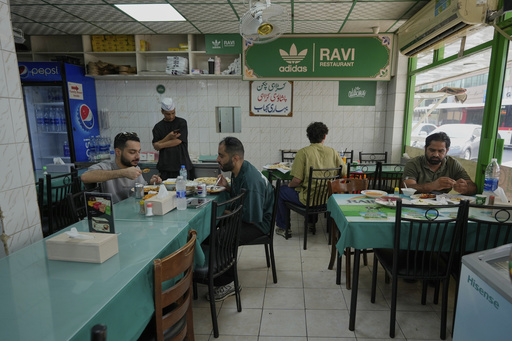In the bustling metropolis of Dubai, a veritable tapestry of dining experiences exists to allure the global palate. From eateries offering seated dining on suspended tables to lavish underwater lounges, the city boasts an impressive array of approximately 13,000 food and drink establishments. In one of the most densely populated restaurant markets globally, Dubai stands out for its ability to captivate diners with diverse tastes and budgets. The city offers everything from pocket-friendly biryanis to exquisite dishes sprinkled with edible gold.
This unique dining heritage places Dubai ahead of its regional competitors, Saudi Arabia and Qatar, when vying for the spending of globetrotting tourists. Indeed, with a higher number of restaurants per capita than any world city outside of Paris, Dubai’s culinary offerings add a distinct edge.
However, the relentless pace of restaurant openings provokes questions about the sustainability of this growth-at-all-costs model. The fierce competition demands not only culinary brilliance but also a theatrical dining presentation. Kym Barter, manager of Atlantis The Palm—a manmade island venue boasting the highest number of Michelin stars in the Middle East—asserts that exceptional flavor alone no longer suffices for success. The added challenge is drawing food influencers, many boasting millions of engaged social media followers, while tackling high rental costs and a discerning clientele.
Dubai is defined by its expat-heavy existence, having around nine expatriates for every Emirati citizen. The city, a hub of foreign enterprise, hosts numerous temporary contract workers and boasts a notable proportion of foreign-born residents, second only to Vatican City. With tourists outnumbering locals five to one, Dubai visitors reportedly spend over five times more on average than tourists visiting Saudi Arabia or the U.S.
According to Torsten Vildgaard, a chef at FZN by Björn Frantzén—a restaurant securing three Michelin stars after charging over $540 per diner—Dubai is on the precipice of becoming the world’s culinary capital. The city’s expansion facilitates a vast number of eateries to flourish alongside burgeoning high-rises and hotels, catering not only to affluent global travelers but also to its hardworking construction workforce seeking affordable dining options.
Fueling this restaurant boom is pressure on major global chains to expand rapidly within Dubai. Yet, this rapid growth raises concerns of a market bubble. Industry consultant Aaron Allen highlights the dilemma faced by companies like Americana, a franchise holder of KFC and Pizza Hut, questioning where to draw the line on restaurant openings.
This ambition reflects a broader trend within Gulf Cooperation Council nations: allocating vast resources to transform tourism industries and reduce reliance on fossil fuels. Saudi Arabia, for instance, undertakes Neom, a $500 billion futuristic city project. Meanwhile, Dubai has liberalized its stance on issues such as alcohol regulations to bolster its nightlife and tourist appeal, though this has been met with scrutiny.
Despite this progress, running a restaurant in Dubai remains challenging, fraught with financial pitfalls. The rates of restaurant closures, while not officially published, suggest a high failure incidence exacerbated by exorbitant central district rents rivalling world capitals. Nevertheless, approximately 1,200 new restaurant licenses were issued last year, according to Dubai’s Department of Economy and Tourism, showing no signs of slowing down.
The realities of operating in this crowded environment manifest in empty seats during rush hours, even in premier locales. This can be attributed partly to notorious traffic congestion, as noted by Waseem Abdul Hameed of Ravi, a renowned Pakistani dining establishment.
The surge in delivery app reliance to combat these challenges often compromises margins, forcing migrant couriers to brave traffic-laden streets—and serious safety risks—to meet tight delivery deadlines. Tragically, reports indicate as many as 17 courier fatalities last year alone.
Analyzing costs and returns from an industry perspective, Aaron Allen observes that operating expenses have more than doubled since the 2009 financial crisis, challenging the financial viability for many entrepreneurs. With pockets seemingly overflowing with funds, many opt for launching restaurants without a strategic plan, underscoring the underlying volatility in Dubai’s thriving culinary landscape.


